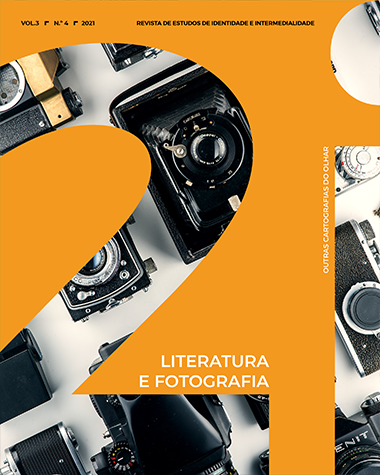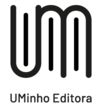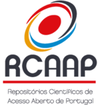Modes of representing the socio-economic crisis in Portugal
Photographic and literary documents of a disruption
DOI:
https://doi.org/10.21814/2i.3459Keywords:
crisis, Portugal, Project Troika, latencyAbstract
While experiencing a socio-economic crisis since 2008, Portugal also suffered a structural and multidimensional crisis. Artists responded with artworks that depicted the crisis, including urban art, theater, photography and later also literature. The results serve as indicators of a social self-diagnosis. This paper's main objective is to analyze the techniques and tools used by photography and literature to deal with this social, political, and cultural challenge. To reach this target, a small part of visual and textual documents will be analyzed.
Downloads
References
Braun, R. (2011). Hito Steyerl. Dokumentarische Praxis ist immer schon eine Handlung. Camera Austria, 114, 27–28.
Braun, R. e Lübbke-Tidow, M. (2011). Jo Ractliffe. Ein Raum für andere Bilder. Camera Austria, 114, 29–31.
Cabrita, R. (2014). Morrer de indiferença [Fotografia]. Consultado em http://rodrigocabrita.com/elderly-at-troika-project
Camargo, J. (2013). Que se lixe a Troika. Porto: Deriva Editores.
Castells, M., Caraça, J. & Cardoso, G. (2012). Aftermath: The Cultures of the Economic Crisis. United Kingdom: Oxford University Press.
Célio, V. (2014). Inexistência do lugar [Fotografia]. Consultado em http://www.vascocelio.com/nmosis-2009/cms14o8xzo7l7oqezw27dbkeg4961p
De Sousa Santos, B. (2012). Portugal. Ensaio contra a autoflagelação. Porto: Porto Editora.
Dogramaci, B., Düdder, D., & Schindelegger et al. (Eds.) (2016). Gedruckt und erblättert. Das Fotobuch als Medium ästhetischer Artikulation seit den 1940er Jahren. Köln: Walther König.
Erll, A. (2011). Kollektives Gedächtnis und Erinnerungskulturen. Eine Einführung. Stuttgart: Metzler.
Foster, H. (2004). An Archival Impulse. October, 110, 3–22.
Gil, J. (2014). Pulsações. Lisboa: Relógio d’Água.
Grimstein, J. (2013). Die Komik der Krise. In Fenske, U., Hülk, W., & Schuhen, G. (Eds.), Die Krise als Erzählung. Transdisziplinäre Perspektiven auf ein Narrativ der Moderne (pp. 309–327). Bielefeld: transcript.
Goodman, N. (1978). Ways of Worldmaking. Indianapolis: Hackett Publishing Company.
Hirsch, M. (2013): Der archivale Impuls der Nacherinnerung. In Kramer, A. & Pelz, A. (Eds), Album. Organisationsform narrativer Kohärenz. (pp. 125–142). Göttingen: Wallstein.
Hülk, W. (2013). Narrative der Krise. In Fenske, U., Hülk, W., & Schuhen, G. (Eds.), Die Krise als Erzählung. Transdisziplinäre Perspektiven auf ein Narrativ der Moderne (pp. 113–131). Bielefeld: transcript.
Iser, W. (1976). Das Komische: ein Kipp-Phänomen. In Preisendanz, W. & Warning, R. (Eds.). Das Komische (pp. 398–402). München: Fink.
Jacinto, L., Carvalho, J. C., & Veiga, Nuno (2012). 12.12.12. Vila do Conde: QuidNovi.
Jacinto, L. (2014). > 350.000 [Fotografia]. Consultado em http://larajacinto.com/personal/350-000/
Koch, L. & Nanz, T. (Eds) (2014). Ästhetische Experimente. Zur Ereignishaftigkeit und Funktion von Störungen in den Künsten. Zeitschrift für Literaturwissenschaft und Linguistik, 44, 94–115.
Koselleck, R. (1982). Krise. In Conze Brunner, W. & Koselleck, R. (Eds.). Geschichtliche Grundbegriffe. Historisches Lexikon zur politisch-sozialen Sprache in Deutschland (pp. 617–650). Stuttgart: Klett-Gota.
Lachmann, R. (1990). Gedächtnis und Literatur. Intertextualität in der russischen Moderne. Frankfurt am Main: Suhrkamp.
Lauer, G. & Unger, T. (Eds.) (2008). Das Erdbeben von Lissabon und der Katastrophendiskurs im 18. Jahrhundert. Göttingen: Wallstein.
Leal, F. (2016). Vem à quinta-feira. Porto: Assírio & Alvim.
Lübbke-Tidow, M. (2011). Renzo Martens. Wir wissen eigentlich nicht, was wir sehen. Camera Austria, 114, 55–57.
Machado, D. (2013). Índice Médio de Felicidade. Lisboa: Dom Quixote.
McLuhan, M. (1967). The Medium is the Message. An Inventory of Effects. New York City: Bantam Books.
Michael, J. (2020). Angst erzählen und angstvolles Erzählen: zur Beziehung zwischen Angst und Literatur (A instalação do medo von Rui Zink und Insensatez von Horacio Castellanos Moya). In Frank-Job, B. & Michael, J. (Eds.), Angstsprachen (pp. 245–264). Heidelberg: Springer.
Miguel, P. (2014). Projecto Troika: a memória à medida das possibilidades. Preguiça Magazine. Consultado em https://preguicamagazine.wordpress.com/2014/01/23/projecto-troika-a-memoria-a-medida-das-possibilidades/amp/
Pena Pires, R., Pereira, C. & Azevedo, J. et al. (2020). A emigração portuguesa no século XXI. Sociologia, Problemas e Práticas, 8–38. DOI: 10.7458/SPP20209419573
Portela, P. (2012). O Banquete. Alfragide: Caminho.
Projecto Troika (2014). Um documento visual para memória futura. Aveiro: Duelo do Silêncio.
Rodrigues, V., Diz, H., &, Palma Lampreia Dos Santos, M. J. (2017). O Projeto Troika em Portugal: media, resiliência e vulnerabilidade. Palabra Clave, 184–212. DOI: 10.5294/pacla.2017.20.1.9
Sena-Lino, P. (2013) Despaís. Porto: Porta Editora.
Simões Castanheira, B. (2014). A ditadura do empobrecimento [Fotografia]. Consultado em http://editorial.4seephoto.com/photographers/brunocastanheira/4sees-photographers-awarded-at-estacao-de-imagem.
Steyerl, H. (2008). Die Farbe der Wahrheit. Dokumentarismen im Kunstfeld. Wien: Turia + Kant.
Turner, V. W. (1964). Betwixt and Between. The Liminal Period in Rites de Passage. In Helm, J. (Ed.), Symposium on New Approaches to the Study of Religion. Proceedings of the 1964 Annual Spring Meeting of the American Ethnological Association (pp. 93–112). Seattle: University of Washington Press.
Valada Becker, C. (2016). Imagens da crise: tendências ficcionais de Rui Zink. Letras de Hoje, 519–525. http://dx.doi.org/10.15448/1984-7726.2016.4.23654
Zink, R. (2012). A instalação do medo. Lisboa: Teodolito.
_____ (2014). A Metamorfose e Outras Formosas Morfoses. Lisboa: Teodolito.
_____ (2015). O destino turístico. Lisboa: Teodolito.
_____ (2015). Osso. Lisboa: Teodolito.
Downloads
Published
How to Cite
Issue
Section
License
Copyright (c) 2021 Susanne Grimaldi

This work is licensed under a Creative Commons Attribution-NonCommercial 4.0 International License.


.jpg)










